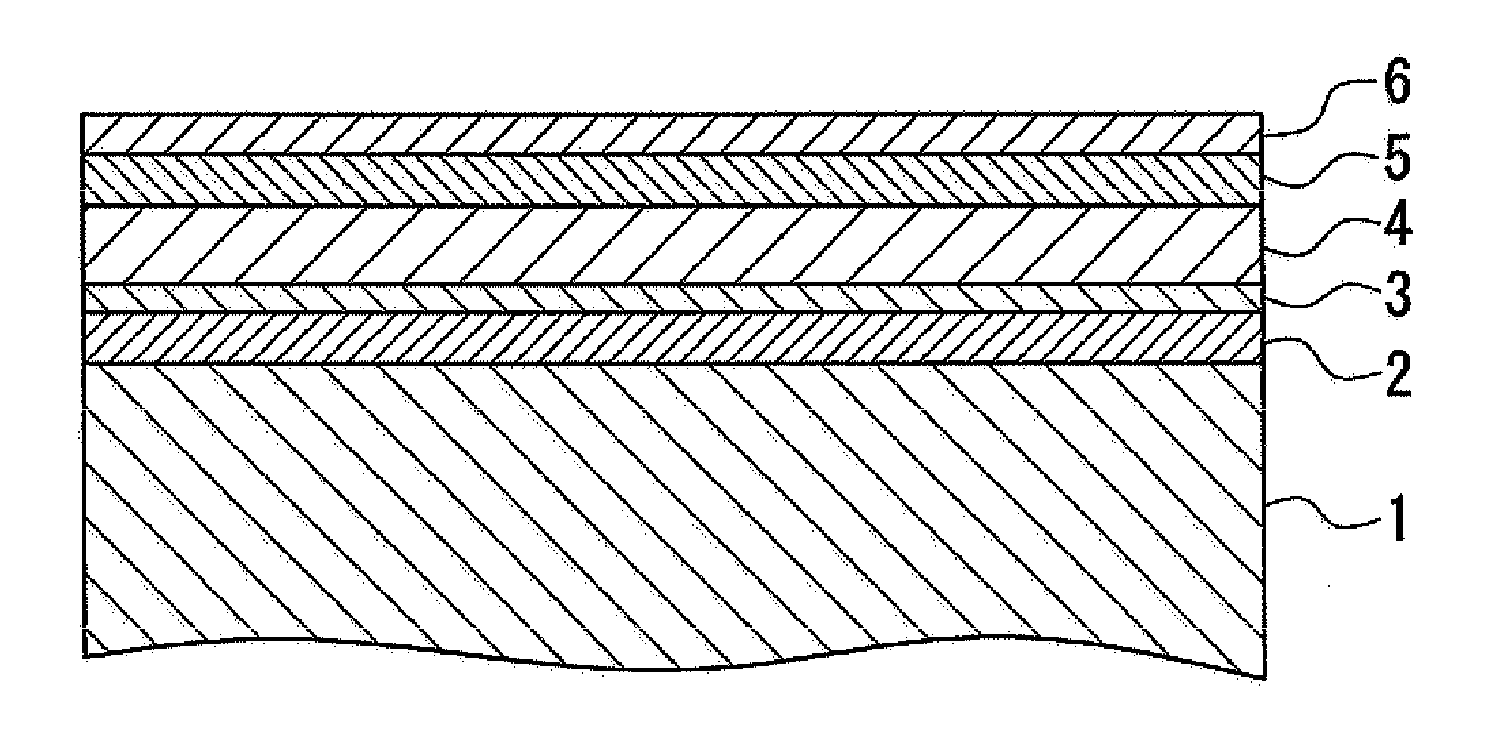Method of manufacturing magnetic recording medium, magnetic recording medium and surface treatment apparatus
- Summary
- Abstract
- Description
- Claims
- Application Information
AI Technical Summary
Benefits of technology
Problems solved by technology
Method used
Image
Examples
examples
[0059]After adequately washing and drying an aluminum alloy substrate having an Nip plated film (diameter: 95 mm, inner diameter: 25 mm, thickness: 1.27 mm), it was irradiated with a laser from a radius of 17 mm to 19 mm (CSS zone) to form bumps having a height of 10 nm. Subsequently, the substrate was placed in a DC Magnetron Sputtering System (Model C3010, Anelva). After evacuating the air to an attainable vacuum of 2×10−7 Torr (2.7×10−5 Pa), the substrate was heated to 250° C.
[0060]Following heating, a non-magnetic substrate layer was laminated to a thickness of 5 nm using a target composed of Cr. Moreover, a non-magnetic substrate layer was laminated to a thickness of 5 nm using a target composed of Cr—Mo alloy (Cr: 80 at %, Mo: 20 at %). Next, a non-magnetic intermediate layer was laminated to a thickness of 2 nm using a target composed of Co—Cr alloy (Co: 65 at %, Cr: 35 at %). Next, a magnetic layer in the form of a CoCrPtB alloy layer was formed as a magnetic layer at a film...
PUM
| Property | Measurement | Unit |
|---|---|---|
| Pressure | aaaaa | aaaaa |
| Pressure | aaaaa | aaaaa |
| Angle | aaaaa | aaaaa |
Abstract
Description
Claims
Application Information
 Login to View More
Login to View More - R&D
- Intellectual Property
- Life Sciences
- Materials
- Tech Scout
- Unparalleled Data Quality
- Higher Quality Content
- 60% Fewer Hallucinations
Browse by: Latest US Patents, China's latest patents, Technical Efficacy Thesaurus, Application Domain, Technology Topic, Popular Technical Reports.
© 2025 PatSnap. All rights reserved.Legal|Privacy policy|Modern Slavery Act Transparency Statement|Sitemap|About US| Contact US: help@patsnap.com



